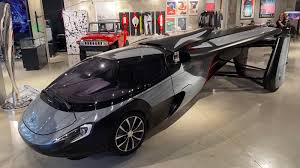
Flying Cars: How Close Are We Really?
It’s the future we’ve been promised for decades—zipping above traffic in our own personal flying car, Jetsons-style. But how close are we really to making that a part of everyday life?
The answer might surprise you: closer than ever, but still facing some very real challenges.
From prototype air taxis to fully electric vertical takeoff and landing (eVTOL) vehicles, the race is on. But is it just hype—or is the flying car revolution actually ready to take off?
Also check for : how-satellites-are-saving-lives-on-earth
✈️ What Exactly Is a Flying Car?
Today’s “flying cars” are not the sci-fi hovercars we imagined. Instead, they fall into two major categories:
-
eVTOLs (Electric Vertical Take-Off and Landing) – Think drone meets helicopter. These are designed for short, city-to-city hops.
-
Roadable aircraft – Cars with wings or rotors that can be driven and then flown from airports or open fields.
Most current models are aimed at urban air mobility—a new market that could transform commuting, tourism, and emergency response.
🚁 Who’s Building Them?
Over 250 companies globally are developing flying vehicles. Some of the most notable:
-
Joby Aviation – Backed by Toyota and Uber, their eVTOL has a 150-mile range and is whisper-quiet.
-
Archer Aviation – Recently partnered with United Airlines to offer air taxi services as early as 2025.
-
Alef Aeronautics – Received FAA certification for a drivable flying car prototype in the U.S.
-
Lilium Jet – A sleek, jet-powered eVTOL aimed at luxury intercity transport in Europe.
Even legacy companies like Airbus and Boeing are heavily investing in flying car tech.
🏙️ Are They Actually Flying?
Yes—several prototypes have already taken to the skies.
-
Joby and Volocopter have conducted public demonstration flights.
-
The Xpeng AeroHT (China) has shown successful transitions between driving and flying modes.
-
Dubai, Paris, and Los Angeles are among cities planning “vertiports” to support flying car hubs.
But commercial flights for the public? Those are still in early testing and regulatory phases.
🚧 The Barriers Holding Us Back
Despite the excitement, flying cars aren’t going mainstream tomorrow. Here’s why:
1. Safety & Regulations
-
Airspace laws need a total overhaul to allow thousands of flying vehicles in cities.
-
Certification for human transport is strict—and slow.
2. Infrastructure
-
We need vertiports, charging stations, and digital air traffic control.
-
Urban air corridors must be mapped and regulated.
3. Noise & Energy
-
Electric is quieter than helicopters—but not silent.
-
Battery limitations still restrict flight time and payloads.
4. Cost
-
Early models will cost hundreds of thousands of dollars or more.
-
Mass adoption will depend on ridesharing-style services, not personal ownership.
⏳ So, When Can You Fly?
Experts estimate a phased rollout:
-
2025–2027: Limited commercial air taxi services in select cities (e.g., LA, Dubai, Singapore).
-
2030: Broader availability, with pricing similar to a luxury Uber.
-
2040+: Widespread adoption if infrastructure and public trust align.
In short: The tech is ready. The systems around it are not—yet.
🌍 What’s the Point of Flying Cars Anyway?
It’s not just about cool tech. Flying vehicles aim to:
-
Reduce road congestion
-
Cut commute times dramatically (think 5 minutes vs. 45)
-
Reach inaccessible areas during emergencies or natural disasters
-
Provide new options for logistics and medical delivery
Some even see flying cars as key to decentralized living—allowing people to live farther from cities without sacrificing time.
🧠 Final Thought
The dream of flying cars is no longer stuck in sci-fi. The engines are real. The prototypes are flying. And governments are paying attention.
We’re not quite at the “Back to the Future” stage, but we’re certainly on the runway.
The future may not be evenly distributed—but for flying cars, it’s finally starting to arrive.